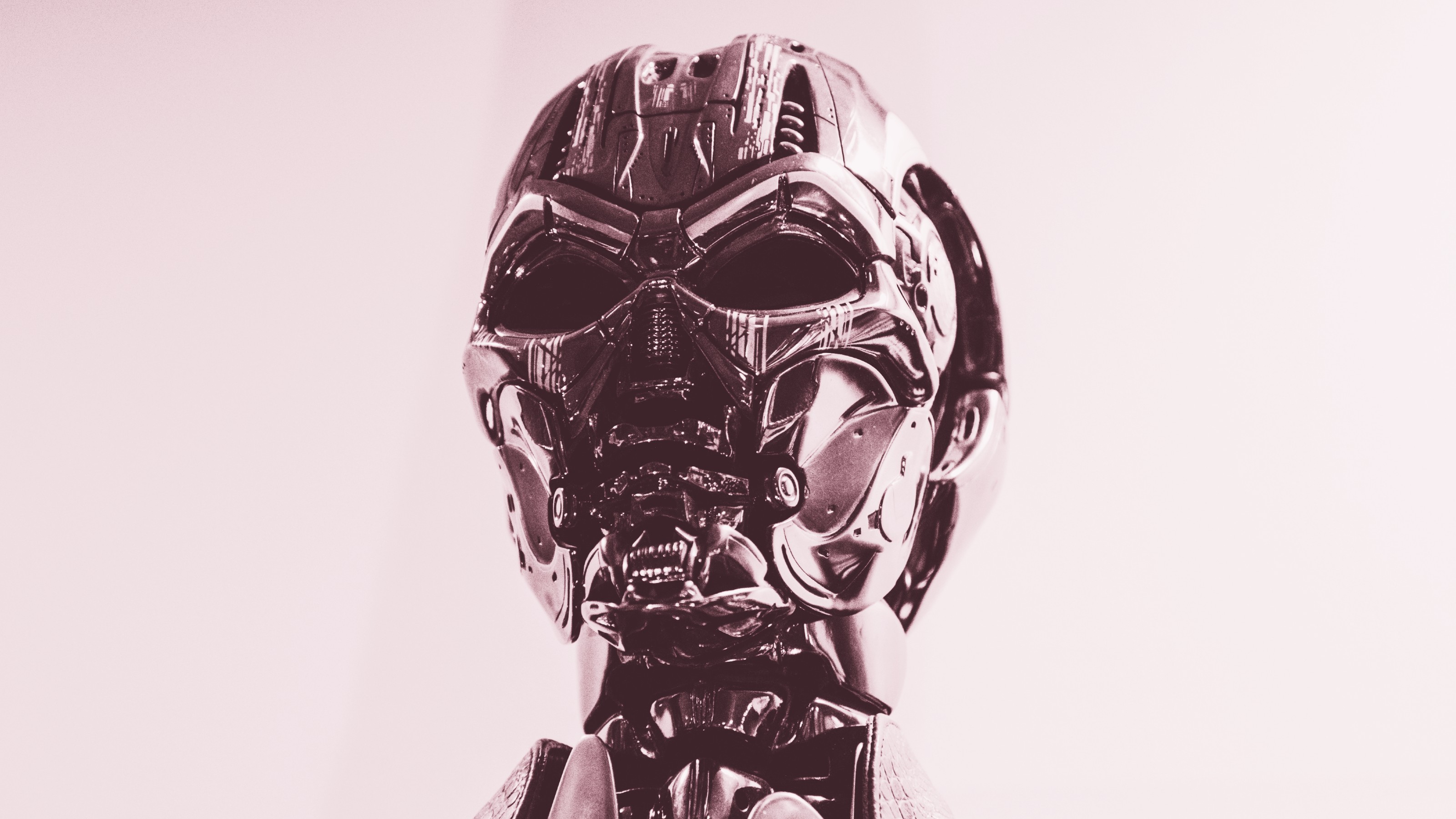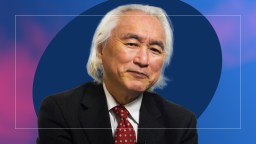There’s no getting around it: we’re all a little bit biased. But when do harmful implicit biases, like racial judgements, form? Developmental psychologist Lori Markson and her colleagues have identified racial bias in preschool children aged three to six years old. Despite learning that kids this age—both black and white—prefer white teachers, or that white kids trust black adults less, Markson is not pessimistic about the future of race relations—in fact she’s the opposite. The more data we can collect on racial bias, the more information we have to develop strategies to close social divides. Based on the research she presents here, Markson outlines three strategies—diversity exposure, bias intervention, and cross-race friendships—that can help to end racist behavior in the next generation, and hopefully in the current one. This video was filmed at the Los Angeles Hope Festival, a collaboration between Big Think and Hope & Optimism.
Lori Markson: As I mentioned, I’m at Washington University which is in St. Louis. It’s actually quite a beautiful city. I moved there from Oakland, California—that was the place I had lived before that. And moving there—having only lived on both sides of the country and never in the middle, and I guess moving in particular to this city—really opened my eyes to some of the systemic racism that was apparent in the city. It’s a great place and it also has a big divide.
In fact, locally—and I’m not sure if this goes on outside the city as well—it’s often referred to as the divided city, and there’s even a line that demarcates where that divide takes place. I live one block from that line and I was seeing, regularly, all kinds of things happen that were really eye-opening to me. I think that the country’s eyes got opened even wider after Ferguson and many other events that continue to happen around the country. But as a developmental psychologist I really took a lot of this to heart because I was thinking about my kids and the kids that I was seeing in my lab, and those kids that weren’t coming into my lab and that I know lived across that line.
And what should we and could we potentially be doing, both for the kids but also looking at kids with some hope for the future? Now what we do know, sadly, in children is that there already are implicit biases that you can pick up and observe in kids at five to six years of age. This is one example of a study that my colleague Melanie Killen did. She is at University of Maryland, so close to Baltimore, and what she found is that different children will interpret these scenes very differently. And what she discovered in this particular study is that black kids actually are much more optimistic about race than white kids. Already by first grade, which is the kids she tested in this study, the white kids were having much more negative or pessimistic kinds of interpretations than the black children who were trying to have much more positive interpretations. An interpretation that’s positive, for example, would be like, “Oh, it looks like he fell off the swing and the other kid was waiting to see if he needed help.” A not so positive interpretation would be something like, “I think he pushed him off the swing so that he could use it.”
So what we were thinking about is how might we go ahead and take action and be looking at the kids? What could we do earlier? Are we already seeing that these biases are developing already in the preschool years? What might we be doing, are there ways that we can step in and intervene on this?
So we know that babies notice differences between people of all kinds, whether people speak different languages, have different color skin, act differently. We also know that by three years of age children are already noticing power and status differences, and that by five or six years of age, as I said, we’re already seeing implicit biases about these. What is happening in the preschool years? We wanted to ask a few questions. I’m only going to show you two things that we’ve been looking at in this.
Now our participants, our kids that are in these studies, are at preschools all over the city of St. Louis. I’m going to report today data that’s coming from kids that are in racially homogenous schools so they’re schools that are mostly all black kids and black teachers or mostly all white kids and white teachers. But we’re also testing at a number of mixed schools that are in the city. Most of the kids in homogenous schools also come from pretty homogenous neighborhoods of both races.And we put them in these two tasks: Accuracy task, which is just having somebody name those three objects and either saying them accurately—it’s a cup, it’s a ball, and it’s a book—or naming them wrong, inaccurately—it’s a pencil, it’s a fork, and it’s a shoe.
And what we see in lots and lots of studies previously, by many colleagues of mine and myself, is that children prefer the person who is accurate, and they also prefer to learn from that person. So what we wanted to ask them here is—all we did was change out the race of one of these speakers and ask them which one of these people would you like to have as your teacher?
And we did that in the accuracy task. So one of these was always accurate and one wasn’t. Then we also put them into a simple teacher preference task. We didn’t give them any background information. We just asked which of these would you like to have as your teacher. And these were always different people. I think I may have put the same faces up, but they’re always different.
And what we found in these racially homogenous schools is that both white and black children wanted an accurate person to teach them stuff and to be their teacher. So it didn’t matter: black, white, they wanted the accurate person. That’s who they wanted to be their teacher. However, when we simply asked them, “Which one of these people do you prefer to be your teacher?” both races of kids preferred the white teacher.
I’ll leave that there for a minute just to sink. These are three- to six-year-old kids.
Now we also put them in a marshmallow task, which has long been used to look at how kids delay gratification that has all kinds of successful outcomes. But we wanted to look at something else. More recently some findings have suggested that you might get different effects in this marshmallow test depending on how much you trust that the speaker is going to come back. So we wanted to use this as sort of a measure of trust in the speaker. And what we did is present kids—again, black or white kids—and the only difference between them was whether they got a black experimenter or a white experimenter to do the marshmallow task with them. And this is all they are. They’re sat down at a table in a room, you’re given a big enticing marshmallow and they’re told, “Just wait. I’m going to be back and if you don’t eat that before I get back I’m going to actually give you another marshmallow so you’ll have two. Bye!” And they leave the room.
They’re being filmed in there so we see what’s going on and we know how long they waited. And what we found, again, is that black kids waited exactly the same amount of time. It didn’t matter if the experimenter was white or black. The white kids waited significantly longer if the experimenter was white. Both of these things suggest to us that there is already something going on starting at three years of age and up, and that there is a lot of work that needs to be done to nip these in the bud while we still have these kids before other things can be happening. Now we are testing at mixed-race schools. I’m hoping that some of this will come out a little bit differently, but we will learn from that and see what exposure and interaction can do. We do know that cross-race friendship is one of the best predictors of lessened bias across races and other social groups.
Quickly, because I know I need to wrap up, I just want to present this idea of what it must be like in a world, for a kid, when you are a minority and everything isn’t presented to look like you. This is what a black child typically feels like when they go to the store to pick a doll or when they go to the bookstore to look at books. Looking for examples of things that represent me, that are like me, that I can relate with, that I can learn from and relate to. And so what if white kids had that same kind of understanding and it gave them a better way or a more clear view of what the world was like.
Now there is one such organization that I’ve been really lucky to partner with in St. Louis. It’s called We Stories, and We Stories is introducing white families and mixed race families to more diverse books and helping parents have conversations about race in their home.
Black families tend to have much more conversation about race, because they need to, than white families that tend to have difficultly talking about these issues with their kids. Even if they’re well-intended and want to, its challenging.
So they’re giving them the books and the resources with which to do this. And this has already really taken fire and there’s a huge wait list. They’ve already worked with I think 500-and-something families in the St. Louis area and there’s 400 or so families at least on the wait list. They can’t move along as fast as the demand.
So I’ve partnered with them, both as member in the program but also doing some of the research to see the effect of exposure of diversity through books and if that can have any kind of impact and change. One important thing about this program is that not only is it supposed to impact the kids, but it already has and we see the effects of it impacting the parents. So the parents caring about this, it’s making them much more committed to seeing change in the region and making sure that their kids grow up thinking differently.
I’ll leave you soon with a quote from Baldwin who said that, “I can’t be a pessimist because I’m alive. To be a pessimist means that you have agreed that human life is an academic matter. So I’m forced to be an optimist. I’m forced to believe that we can survive. Whatever it is we must survive.” But we don’t have to survive everything. Some of the things we need to figure out and we can change them.
I really have the audacity of hope for racial equity to keep moving forward, and I want to leave with this quote, which is when I was struggling—not only with the things that were going on in my city around me—but then the campaigns and elections last year. Sometimes I say, “Why should we do anything? There’s no hope.”
And this gave me some hope actually, some optimism; and if you can’t read it there’s one of these little creatures that’s saying, “Why so optimistic about 2017? What do you think it will bring?” The other one says, “I think it will bring flowers.” “Yes? How come?” “Because I am planting flowers.”
And what optimism can do is give us the faith that eventually takes us to seeing some improvement, to seeing some achievement. Nothing is going to be able to be done without the ability for us to be able to imagine what isn’t there, how things could be changed or imagine the ways in which things aren’t already, and that requires hope. So for hope and optimism, this is my view of how these come together, and I ask that you plant lots of flowers.





